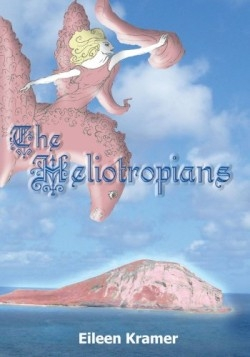
The Heliotrophians
Heliotropians is a short yet meandering fantasy novel that focuses on the life—and particularly the loves—of Undi, a young woman closely associated with the ocean. Her name is clearly related to undine, a water elemental from European folklore, and a sentient sofa at one point compares her to Botticelli’s Venus. Undi travels back in time with seven companions from a future whose people—the Heliotropians of the title—are so far advanced in their use of technology that they seem to have magical powers and are so long-lived that they are basically immortal.
The narrative’s tone varies from ethereal to dark in ways that indicate this is clearly a book for adults. There isn’t any explicit sexual content, but a variety of adult concepts do come up: drug addiction, suicide, and prostitution. Undi herself has some ambiguous relationships with much older men.
In a clever twist, one member of their group becomes disembodied and narrates the story. Like Undi, her fellow travelers have names inspired by traditions from around the world—Eva, from Eve, no doubt, because she is so focused on motherhood; Parvati and Tiger Hound, who spend a lot of time in India and are obviously borrowings from the Hindu pantheon; and Isis and Osiris, whose stories closely resemble those of the Egyptian gods of the same names. Two characters with puzzlingly divergent names are Jason, the disembodied narrator, and Marius, who primarily remains in the same place despite traveling in time with his fellows.
The book is printed in an unusual format, illustrated with drawings which at their best resemble the work of Saint Exupéry and at their weakest are naïve and uninspiring. The narrative is a strange and at times incoherent mix of soap opera and imaginative tale-spinning. Although long passages are mythological in setting and tone, in the middle of the book, Undi becomes involved with the art world of late twentieth-century Paris, and much of the narrative unfolds there. Non-Heliotropian characters are mostly denizens of that world, including, in an intriguing and original touch, a green-upholstered sofa (the Heliotropians and some rare humans have the power to communicate with inanimate objects).
On the whole, this is an atypical book, with content that it is intended for adults, but with illustrations of a type and quantity usually found in a juvenile or YA title. There is some awkwardness in Kramer’s syntax, and the context and scene changes can be a little jarring, but this is still a charming and quite original novel.
Disclosure: This article is not an endorsement, but a review. The publisher of this book provided free copies of the book and paid a small fee to have their book reviewed by a professional reviewer. Foreword Reviews and Clarion Reviews make no guarantee that the publisher will receive a positive review. Foreword Magazine, Inc. is disclosing this in accordance with the Federal Trade Commission’s 16 CFR, Part 255.
